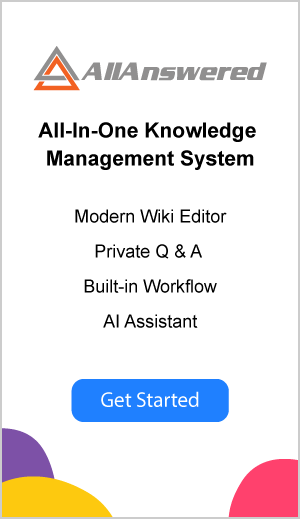Fostering A Learning Organization Culture Can Thrust Companies Toward Success
Everybody learns something new every day, whether the information seems inconsequential or not. This new information could come from a friend, or it could come from an answer Google provides to a search you conducted.
With today’s technology, getting knowledge and learning new things has never been easier. And, even though that is the case, not every business fosters this air of learning. This could be costing them good employees and profits.
If you’re not focused on helping your employees learn, this is the moment to begin. And it starts with learning about the learning organization culture and bringing to full fruition, so your business sees further success.
A Better Understanding Of The Learning Organization Culture
Corporations promote a learning organization culture that fosters employees’ desires and goals to expand their skills and knowledge and encourage them to be innovative. This type of culture encompasses five pillars of a learning organization:
- Building Shared Visions – Encouraging and fostering dialogue and passion that leads to action instead of ordering without taking into consideration the context. Storytelling is a prime way to promote shared visions.
- Systems Thinking – An organization can reorganize itself into smaller complex systems but look at every individual aspect and the whole system. A systems map will give owners a clearer picture of the organization system.
- Mental Models – Realizing your decisions are based on assumptions and generalizations but continue to learn and accept new concepts and perceptions.
- Team Learning – Collaboration between employees allows them to think outside the box to attain objectives.
- Personal Mastery – Provide employees with the ability to become experts in their field via continuous education and skill-building prospects.
According to Peter Senge, the founder of the learning organization culture framework, it fosters a setting where people are encouraged to think outside the box and learn new things. It allows people to freely explore the world around them and learn new things together.
This kind of culture is beneficial to employees; to foster the desire to grow so they can help themselves and the company. A business that allows for such a culture is often successful in the industry.
The unfortunate aspect of the working world is the feeling people have about their jobs – they are just there to get a paycheck; to carry out tasks for the day and leave. If no one acknowledges their ideas or addresses their concerns, they see no point in sharing their ideas.
This is the last thing any business could want! It doesn’t lead to success and actually disheartens employees. It doesn’t lead to further innovation or collaboration.
Learning to learn is a must for companies and their employees. It’s a process that brings together different departments, individuals and management styles. Now, individuals and departments have habits that will be hard to break, but forging the management styles changes the corporation – from traditional to innovator.
A learning organization culture fosters an open communication and analytical atmosphere – something businesses should want if they desire success. Employees are the number one asset of every company, so showing them their importance helps unveil a host of benefits companies can enjoy.
5 Advantages Businesses Can Attain By Fostering The Learning Organization Culture
Companies who choose to operate under the learning organization culture will experience many benefits, but the five key advantages of this culture include:
- Improved Efficiency
- Sharing Information
- Problem-Solving
- Better Innovation
- Community Support
Improved Efficiency
Teams who work collaboratively and use programs that foster learning can become influential internal observers. This type of culture allows companies to address problems in-house instead of calling in an outside firm. This lowers costs and improves turnaround times.
Employees in this culture tend to be more organized and efficient, and instinctively realize when something is off and possess the ability to stave off problems before they begin. They can reach out to other departments, so inefficiencies are addressed, and customers reap the benefits of your efforts.
Sharing Information
Every pillar in the learning organization culture touches on information sharing. When information isn’t freely shared among departments, it leaves employees scrambling around. This lack of knowing other department objectives can hinder the business from attaining success.
Companies should provide all employees with access to information they need to understand their vision and goals. Employees will understand what each other’s’ roles are and what they can do to ensure the business’ success.
Problem Solving
“Teamwork makes for dream work.” Based on the adage, people who come together to attain a common goal are likely to see a plethora of success. Everybody has their own strengths and ideas they can bring with them. This is especially helpful when the company is faced with a multi-faceted obstacle.
Problems are easier to solve when they are shared. With an open line of communication about a problem, people can come up with a thoughtful solution to it. This collective brainstorm benefits the whole company. This method may reveal credible consultable sources never considered previously.
Better Innovation
You can’t force innovation, but the right culture will foster it. There needs to be a combined collaboration of approach, culture, leadership, and talent for there to be minimal disruptions.
For example, social media platform Facebook and search engine Google are successful in fostering this culture. The companies encourage their employees to learn, giving them the time and space necessary to expand their knowledge and allowing them the chance to share their ideas… no matter how odd those ideas may be.
Employees are encouraged to brainstorm with other departments in the companies, which leads to proactive measures that company leaders can listen to. These ideas may then become a reality that leads to profits.
Community Support
When management seriously acknowledges the feedback and ideas, it can lead to higher employee confidence and engagement levels. Recognizing the contribution allows employees to take pride in themselves, the job they do and the company they work for. This is a lasting benefit that leads to business success.
When employees have a say in what happens within the company, it gives them a stake in its success. When they see their efforts are not going in vain, they’ll do what they can to help the company attain its goals. It makes them feel personally invested and feel a sense of responsibility to ensure future success.
Conclusion
A learning organization culture can benefit any company regardless of the industry. With the right tools, such as a robust knowledge base software, to promote growth, your business will foster a welcoming atmosphere of community support and the sharing of perspectives. If your business is on the cusp of success, a learning organization culture could be what propels it to greater heights.








